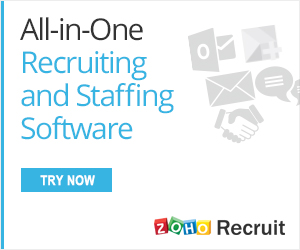3 Ways to Successfully Screen Candidates

If your workers value your business enough (and their role in it) to rate your company as a “Best Place to Work,” I think it’s fair to say that, as an employer, you not only have a handle on recruiting the right talent, but engaging and retaining these workers.
Your employees are your biggest brand ambassadors, and recruiting people who genuinely care about and support your organization’s mission is a surefire way to maintain the strength of your employer brand.

Below are the top three companies featured on Glassdoor’s list and a peak into how they screen and assess candidates during their recruitment process:
1. Bain & Company
Bain says that finding the candidates who best fit their “dynamic organization requires an extensive and thorough interview process.” And Bain stays true to its word.
The company recruits from universities and colleges all around the world. Applicants are broken down by skill and degree level—undergraduate and masters, MBA, other advanced degrees and experienced professionals—and the depth of the interview process typically matches these levels.
For example, those with undergraduate and masters degrees may have to undergo a first and second round of case interviews, each round containing two interviews. According to Bain’s website :

Someone who has a MBA must complete one round of case interviews plus a second round of one case interview, a written interview and an experience interview. During the written interview, applicants receive 20–30 PowerPoint slides describing a client situation and are required to handwrite a short synopsis of their insights and recommendation(s) before the interview begins. They must also present this during the interview.
For the experience interview, “…the interviewer will use traditional resume questions, a mini-case based on your experience and/or behavioral questions to gain an understanding of your past experience and your interest in Bain.”

2. Twitter
No wonder Twitter is second on the list; from the looks of its recruitment video, the employees seem to enjoy themselves. The video shows employees in a variety of settings (one scene even shows a man smoking) as it describes the different components of the company.
Twitter, as expected, recruits potential talent online via its @jointheflock account where job seekers can find “All the deets about who we’re hiring, what we’re doing and why you should come and work here!”
I think this is an especially important concept for the recruitment process. A great way to attract talent to your business is by recruiting using your company’s own products and tools. This will also help in the screening process. In Twitter’s case, at least the company will know that the majority of its applicants from the @jointheflock handle understand how to use the social media tool. And, as in any business, having employees who actually understand what your company does is crucial.
3. LinkedIn
In her Mashable.com article, writer Sarah Swallow talks about getting a job at LinkedIn. And who better to offer Swallow inside information than LinkedIn’s own Director of Global Talent Acquisition, Brendan Browne.
Browne says that the company’s interviewing process begins with two phone screenings: one where recruiters conduct “high-level assessment[s] to really understand [a person’s] motivations … and to make sure they have some of the key qualifications and competencies we need.” And two, if all goes well, a phone call from a hiring manager or a technical phone screen for a tech position.
Once passed, job candidates advance to the on-site interview. Brown explained that the format of the interview depends on the role’s group, but the common theme across all interviews is that “most people are coming in and displaying their problem-solving ability real-time, tackling real issues or acting in a real-life scenario.”
Swallow writes that candidates then “meet a few senior LinkedIn executives toward the end of the process. The discussion is generally focused on career development and “where LinkedIn can take them in terms of their trajectory,” says Browne.”
A special thank you goes out this month’s Leadership Sponsors: Zoho, TheLadders, and Linium Staffing. Please visit their sites to understand how these quality services can elevate your interviewing and assessment.

